Whether we like it or not we all live in the age of the selfie, and along with this codified narcissism comes a public desire and duty to not just behold the work of a creative, but to place that creative’s self alongside in a way unheard of before now. Whether we like it or not, we have and must be smarter about how we present ourselves as creators, alongside our creations or otherwise.
The artist must now pass as a figure on the landscape as well as his or her work. Even hiding from it can create a public persona that can affect this. There really is no way of getting around it. We live in a time where it’s harmful to not recognize and comsider this as artists. Better to know this going and have a hand in shaping your public persona because if you don’t, someone else will, and you may not always like what gets crafted. For what is usually a class of malcontents and privacy protectives, facing forward to the public and taking the initiative is a hard sell. And the better you do, the more successful you are at your work, the more difficult this will be. The stakes get higher and as the circle widens and widens, you’ll begin to have less and less control over your public self, no matter what you do. Below is a guide to just a few of the essentials to consider.
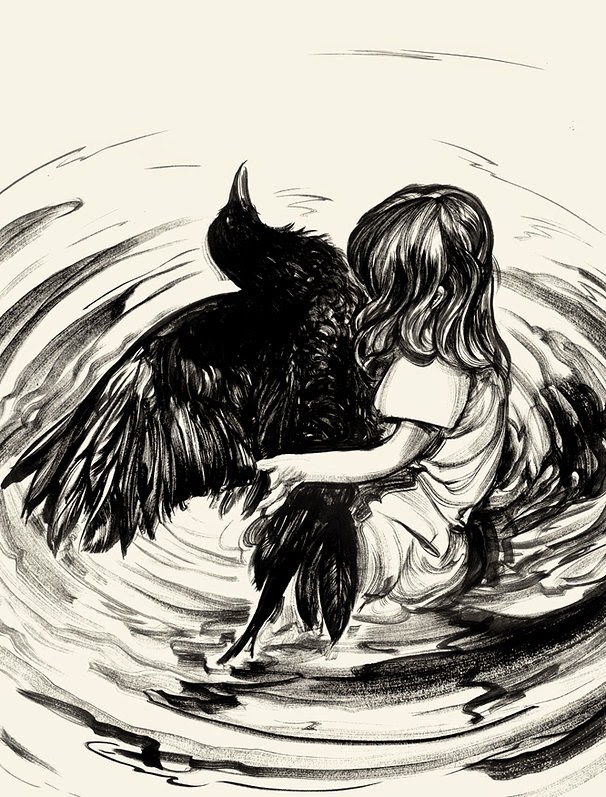
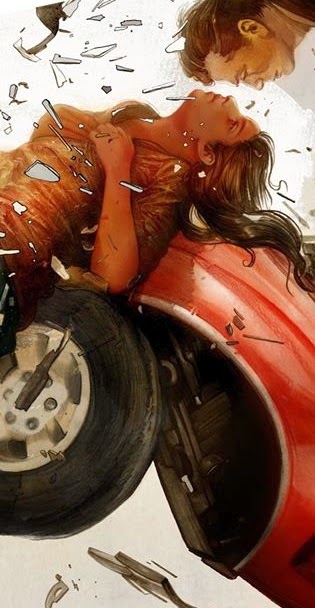
Unless that’s kind of the point. Assuming it’s not, as an artist it is a terribly intimate act being put out into the world by showing your work. Remember that for the most part, the work is not you and any negative or positive comments or reviews aren’t so much about you but about what you did. It’s little comfort I know. These are after all, our babies and seeing them in jeopardy at the hands of negativity gets our fur up. Getting too drunk on positive comments can be even more dangerous, even though it doesn’t feel like it is. Thing is, a scathing negative, or even more so, one repeated, can be a fount of help in terms of seeing areas that need improvement. This is one of the main reasons for showing your work to others at all: it’s hard to see one’s own missteps. Sometimes it’s just not nice and there’s nothing to glean, but really often enough, you can improve your craft a great deal by learning to stand up to negativity or criticism. It’s a talent I would argue that is second only to the talent of making work itself. We as a species learn little from our successes, but learn tremendously from failures. It’s an ancient hard wired part of our biology and it can be of great service to our art if tamed and directed properly.
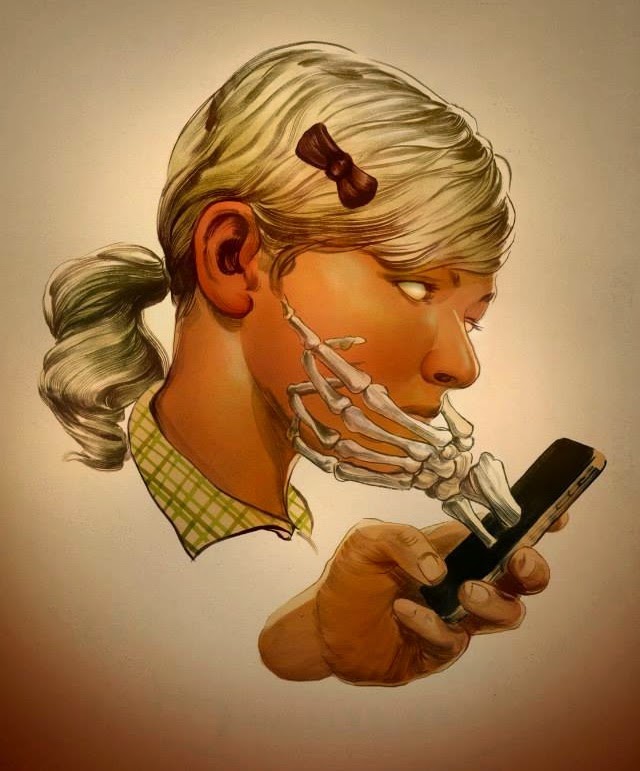 |
|
SELFIES cover from the Tor.com story |
Which is really an extension of the previous paragraph. Separating yourself from your art is really about separating your ego from your art more than anything else. Whatever you do, however much you push it away and stovepipe it on the outside, on the inside it is of you and from you and that is unbreakable. Making art as personal therapy doesn’t really work- not for me. It’s poor therapy and tends to produce myopic, indulgent, and even maudlin work. The discovering of yourself in making art is more electric from the discoveries of your hidden self as opposed to being overly conscious of what your doing. Sometimes it can take many years to then look back and start noticing themes and patterns. Putting yourself and your art out into the world can speed this up a lot. The key is to make sure, even in the process of making the work, you maintain enough distance to identify when you’re doing it for the wrong reasons. Ray Bradbury once said “If you find that, when sitting down at your typewriter, you begin to think about how great and successful your story will be or make you, stop. Get up and do something else. Never write until you’re ready to focus on the story”. It’s hard not to get excited about what you’re working on and the imagination sometimes loves to pay act scenarios where you take over the world with your work. Art is an act of supreme arrogance by its very nature, so dreams grandiose and ridiculous are bound to spring up. Nevertheless, these are not relevant to the work or to you, and if taken too often or too seriously, can harm both how you present yourself to the worl and what you should expect from it.
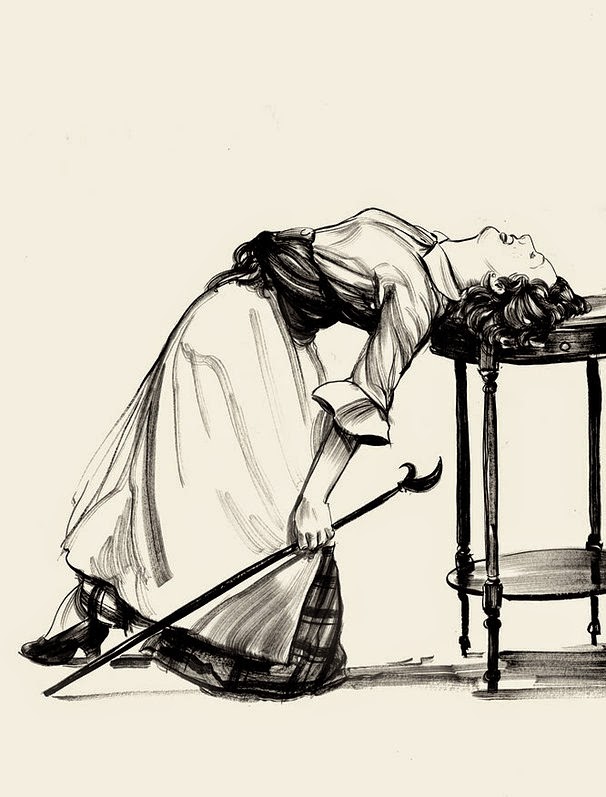 |
| DEADLINES from The 52 Weeks Project |
More can be better at times as much as less can be. No presence means someone else is writing your biography, and that’s rarely a good thing. In fact at best it tends to be wrong a lot more than is fair, and at worst, is a disaster of misinformation. If you’re going to social network, give interviews etc… do them well and only up to the point you will want them to be. Meaning, set your boundaries and defend the hell out of them. The more popular your work gets the more demanding the publicity aspect of your outward persona will be called out to play. Learn to say no when it goes to far and make sure to be smart about where you go. Sometimes it can be too much, you go out to far and can start drowning. We see it a thousand times over, and it is the midwife of the meltdown or flame-out. Thing is as your work gains more traction with its audience you will find both opportunities and a need to present yourself to that audience more. I’ve done five interviews this last week alone, not including the radio spot thursday, the book tour for Coming Home and the various articles I’ve been tasked to write over the next month. It’s all lovely but really exhausting and everything a mixed bag can be. It’s far and away a different animal than the one I came in on, and though important overall no doubt, keeps me from spending as much time in the studio as I prefer. Part of me still considers that work, and this other stuff… I don’t know… not work. But it is. It’s all of it the voice through which others can be brought into the work, and those already familiar can be given more to digest. So I find I myself am moving these goal posts a lot more often recently. It may or may not last, and as much of a disruption it may all be, it is a rare and essential opportunity that needs to be taken advantage of while it’s happening. The dividends of a concentrated public face were proven to me completely in the success of The Lost Boy, and it’s a lesson I plan on learning. So even if this stuff starts to overwhelm, it’s important to be able to say no when you must and when you can’t, know that it’s a finite thing. Next season they’ll be interested in someone else and you can get back to what you love to do. But when you do, if you do it right, more will be paying attention, and the next time a project comes out, there’ll be that many more to digest it.
 |
| Sample art for THE SEA SCARF |
This can happen by the had of the artist but is more often a consequence of the artist as being so popular at a given time they become married to that time. We can all look back on certain periods of time in our culture and point to artistic styles or icons. Peter Maxx would not at all have the same experience if he came out now as he is, than when he did in the 1960’s and 1970’s. An artist that becomes too much a creature of the period in which they live, are endangering their relevancy down the road. Sometimes this is unavoidable, and sometime sit’s so huge it doesn’t matter: I call this “The Spock Effect”. Nimoy is more than Mr. Spock and in the past has railed against being seen as anything else. However, he has also come to realize the value and benefit of being so married to one ethos, and has learned to hug it. In some ways you’re lucky to be blessed with such problems, but it runs counter to the destruction/invention cycle that makes good are, and if you lose yourself to it, then your work will undoubtedly suffer. Like most things that will come to you via your art, you will serve yourself and your work best by keeping a clear head and using that incoming stuff to your advantage. But you have to stay sharp, and occupy a measure of distance so you can make proper choices. That’s where the trick is. So being an art star rising like a firework can seem exciting, but it can also exact a terrible price on your future. Don’t wish for early super success, and pity the artist that experiences this. Without the firmament of self and of the work that only time and experience can bestow, the raging storm of success can tear you apart. Or at the very least leave you a misguided egotistical jerk, oblivious to how out of touch and lost you really are. It’s not always the result but it wants to be, so be careful and mind your speed.
Our current digital and informational age means we as artists can be closer and in touch with our audience in ways impossible to imagine even as recently as when I was just starting out. It can make us feel a bond we would be lacking, can provide a resource for advice and wisdom, and it can be a terrible distraction to the making of the work. Generally the benefits for oneself far outstrip the consequences. Make time for it, get on a schedule and you’ll have a much easier time of it overall. The larger your circle gets in the social media world, the busier it will get. You’ll not be as available and that will only get worse. If handled properly, social networking can make a paltry showing at a book launch a crowded success. It can bring attention to work otherwise lost int he minute-to-minute recycling of work and art. More people can see and share your work. Even just some silly banter or some quick advice or conversation with a reader or follower can have seriously important practical effects. Learn to be patient, and succinct and you’ll do fine. Know and identify what each of the venues provide, and make sure they’re a good fit.
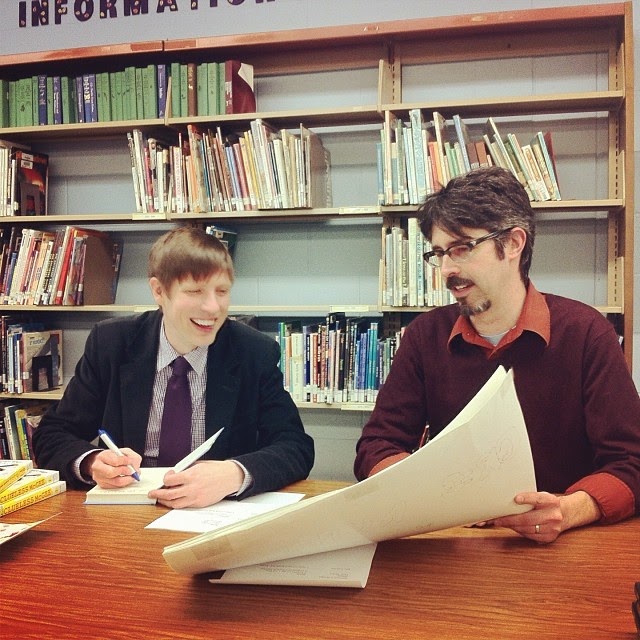 |
| Jeff Mack and myself at a school event and signing |
As much as a vibrant online society can be, it doesn’t hold a candle to actually meeting these folk, or showing up at an event, opening or book signing. The impact you have in person is a million times deeper than the one you may have online, even at its best. Looking your audience int he eye, seeing how they look at your work, all of it… there really is no substitute for it. It’s not easy for a lot of us, but we need to learn to swallow hard and dive in. The tale of the hideaway genius makes for good copy, but doesn’t really work in the real world. Again, know your boundaries, but don’t run from them. Push right up to the edge, and meet your folk. Conventions, book signings, in store appearances, hell even just going out with colleagues for a beer… these all count and they all of them conspire to help work and learn how to stand alongside the work you do as an artist, without getting in its way.
 |
| The Torment of Saint Anthony by Michaelangelo |
Seriously. Some of us are natural jerks, but that doesn’t mean we can’t learn to be kind civilized human shaped creatures. You don’t have to be everyone’s best friend, but everyone deserves your respect. Even the jerks. Especially the jerks, because when you’re dressing them down, you’ll likely be doing it in front of others and that is not a pretty sight. Here’s a thought exercise to prove the point: Think about how you feel when some troll starts tearing into a perfectly nice person and that person continues to be nice despite the trolling. Now think about the troll who gets the person to troll back so you get to see a muddy troll war unfold. Which person do you respect more? This really comes down to being able to keep the emotional heat in check, recognize when it’s getting a bit far and choosing the right way to cool that down before you start going nuts. Try not to speak ill of others, or talk down other people’s work in interviews because everyone is someone’s favorite artist. It’s perfectly acceptable to state simply it isn’t your thing, but you can always find something to compliment. This is especially true in portfolio reviews and even more so in online correspondence. Basically the core rules of polite behavior you learned in first grade still apply. Actually they apply more than ever. We all still have high regards for Picasso even though the by all accounts, the guy was a jerk. This is not a success for Pablo. He is who he is and maybe that personality is what fed the work… who knows? I have never met a pain in the ass artist whose work was made better by their unpleasant personality. When you speak you represent your work and what you make in some way. Be a friendly positive person and people will actually be more interested in your work as a result. A painting that doesn’t change can be loved more by this. The opposite can happen too.
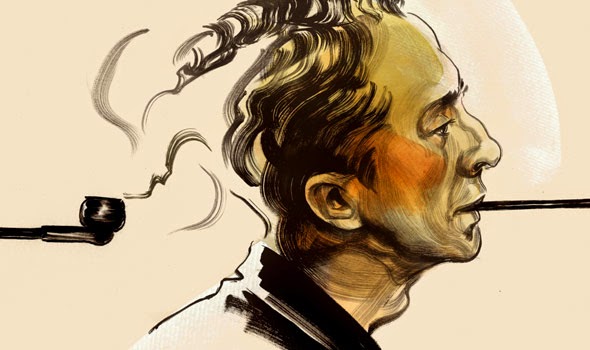 |
| NORMAN ROCKWELL for Slate.com |
A buddy of mine just saw a movie at a premier he thought was incredible. He called me to tell me all about how blown away he was while watching it, thinking it was easily the best thing he’d seen in years. Then the actor (drunk) and director came out to do a Q&A and by degrees, he said his appreciation of the film shrunk with every word they uttered. ALl the deep meaning seen in the film was just being imported, or even if not, the speakers were so inane and feckless in how they talked about it, they made their work seem feckless and inane. You can spoil a perfectly great piece of art, book, story, or song by not knowing how to speak about it in a way that adds to its value. It’s a lot easier to blow a good thing like this than not, and really this is a skill that can only be learned from doing it over and over. Learn to listen and fold the perspectives of your audience into how you speak to them about the work your making. Don’t get caught up in your own self loathing and shoot down compliments and mistake that for being humble. If you feel like you have a hard time with this, default to the Hippocratic Oath: Do No Harm. Meaning say less than more. Better to seem enigmatic than idiotic.
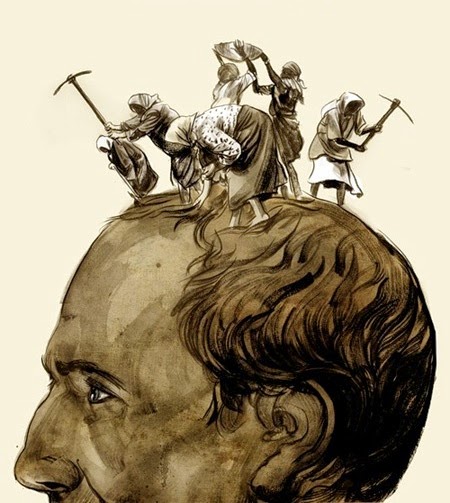 |
| SIX WORD TALES collaboration with Stiles White |
Overall each of us must face our own audience in our own way. I wouldn’t want it any other way actually. It’s what makes our community so vibrant and rich. But it is a skill and one even those blessed with a talent for it, must learn to hone and use properly. We’re past the age where as an artist you can hide away and hope success finds you. There’s so much good work out there, so many qualified and accomplished visionaries making their work and sharing it, you’ll just get lost in the noise if you don’t stand up and participate. Whether you like it or not, whether you think you’re capable of it or not, you must and should do this. If you can’t represent and celebrate your own work, how can you expect anyone else to? Sure it’s scary, sometimes utterly breath-stealing terrifying. But that’s a reason to do it if for no other reason. Good art is made by seeking out what scares you and learning how to overcome and ride it to new and surprising places. A lot of this stuff is really just common sense. Some of us just have that and are set, others of us, like me, have to learn it and oftentimes learn it the hard way. Ultimately the most important lessons are learned by doing, so consider this post a kind of basic map, rather than a cure. You may well have to go through some of this yourself no matter how much advice you digest. So… Be bold, be brave, speak your heart and be nice and you’ll only aid your cause and make for yourself a better and happier career. You are best served by being your own best advocate. These are your children, so learn to speak up for them, defend them and make them grow into something fantastic.


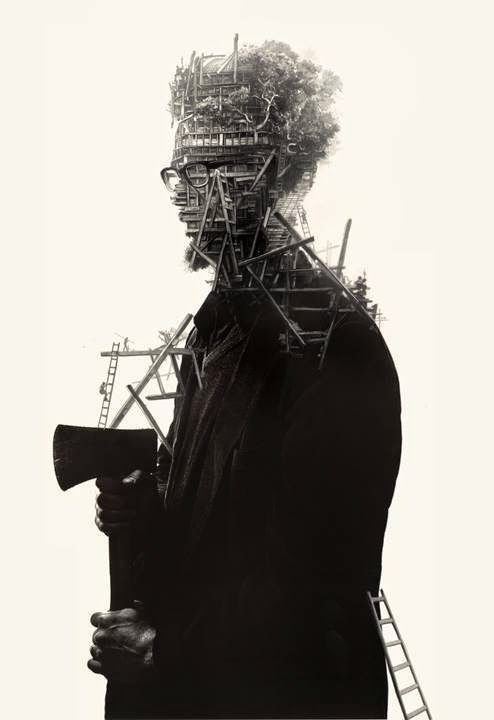
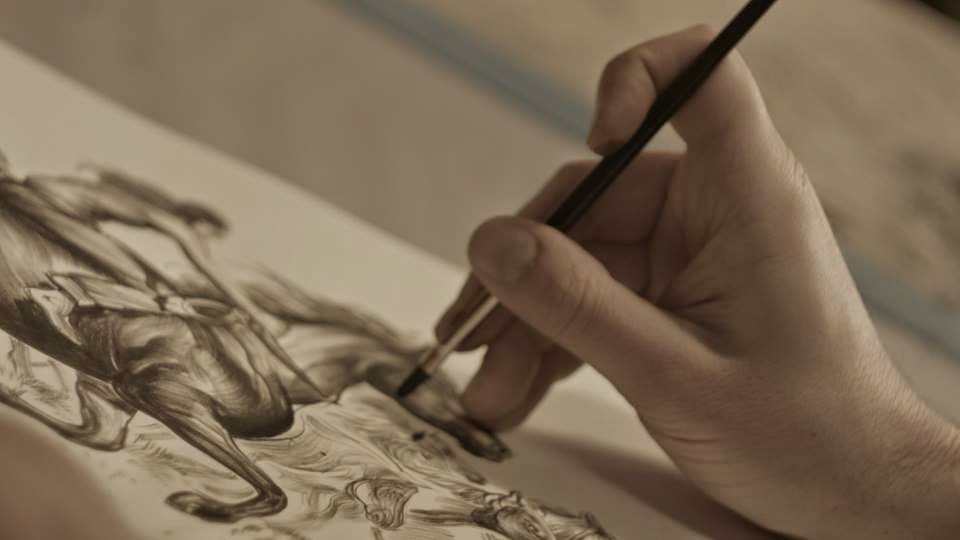
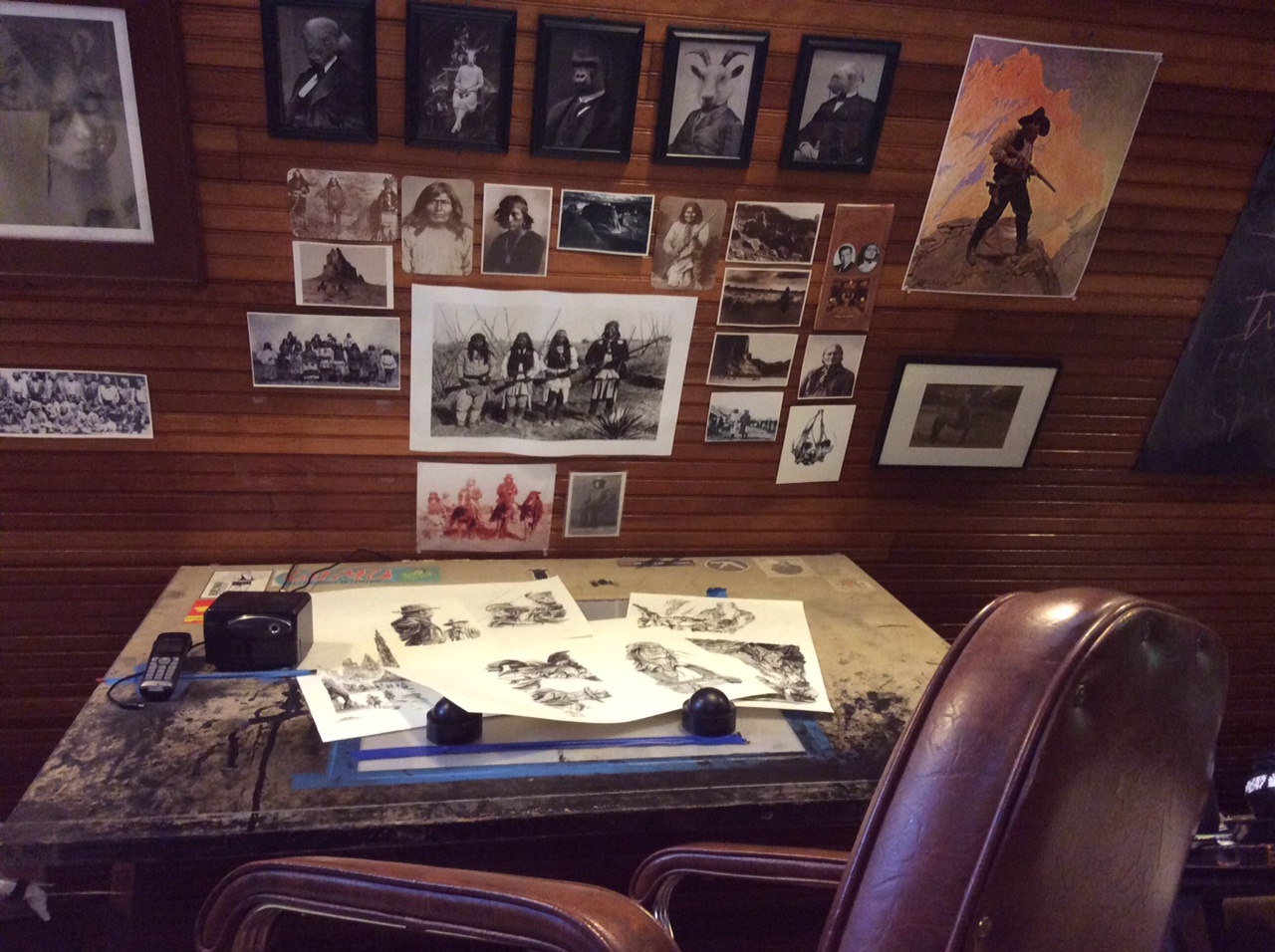
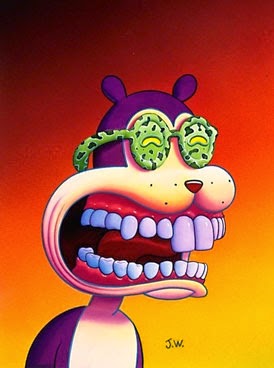

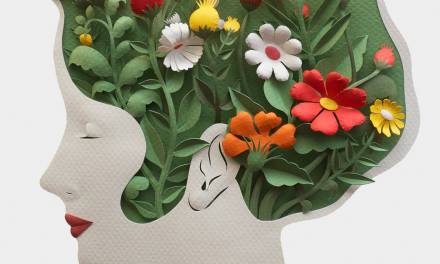
Wow Greg, I can't tell you how much I enjoyed this post. Wise and timely words. Sadly I discovered we are not on the same jury for SOI so we may not meet. Someday though.
As a woman at the start of my career, I'm curious about how exactly sexism gets in the way of a female artist's life. Anyone have any experiences or observations to share? What are the expectations and how do they manifest themselves? I'd rather know what I'm getting into than resort to discovering this first hand.
It was wonderful reading your post Greg. Thank you.
I just found a tiny typo (hope this isn't too pedantic of me): SECTION “The pitfalls and successes of social networking are real and lasting.”
Paragraph 2 – ” Again, (k)now your boundaries…..”
Greg, I appreciate your thoughtful and thorough articles very much.
No Worries Neave, as a typo master of masters i always appreciate a notice when the inevitable misspellings arise.
Lindsay- most of what i was referring to is around the idea of how we're seen as artists. Some arenas are more macho than others. Comics for instance can be nearly paleolithic when it comes to how certain groups treat, view and objectify women. The value of their art tends to center around how they might rate to the men looking at them. It's getting a lot better than it used to be, but coming from comics a medium still largely dominated by men and male views, into the larger book world- a medium occupied with a far stronger and more actualized female presence, the differences have been striking.
Men as they oresent themselves publicly tend to enjoy more freedoms and less pressures in terms how they present themselves. They are far less objectified than women, and puts a greater and sometimes more tricky burden on how women stand forth before their work and vouch for it. This kind of thing still remains culturally overall, but i don't think it should himder either party from proudly stepping forward. I just think it will be far more effective to do so, if the realities of the landscape are talked about and identified. The balances tip in different directions depending upon the area or genre you decide to persue. With luck such issues may never rise above a petty comment here and there. But again it's situational. As a man i can't claim to know the exact ins and outs of the female perspective in this regard as fully as i would like. Inwould love to hear more myself.
Glad everyone liked the post- Sorry Bill not to see you in NYC. Seems to be the need to stovepipe us all to get through all the work. I'm sure we'll catch up later. Maybe at MoCCA this Spring?
Thanks for the great article Greg. It's encouragement in an area I'm sure many of us need it!
I myself need to hear th self same thing most days. It's constant fluidity is what makes this hard and also what makes being am artist interesting.